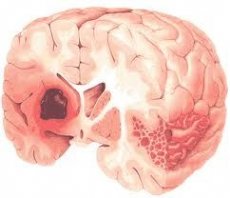Medical expert of the article
New publications
A 20-year search for a drug to treat stroke has succeeded
Last reviewed: 01.07.2025

All iLive content is medically reviewed or fact checked to ensure as much factual accuracy as possible.
We have strict sourcing guidelines and only link to reputable media sites, academic research institutions and, whenever possible, medically peer reviewed studies. Note that the numbers in parentheses ([1], [2], etc.) are clickable links to these studies.
If you feel that any of our content is inaccurate, out-of-date, or otherwise questionable, please select it and press Ctrl + Enter.

A team of scientists from the University of Manchester, UK, has presented a drug that dramatically reduces the extent of brain damage in stroke patients. Phase 2 trials on a small number of patients have yielded encouraging results. The scientists hope that larger clinical trials will confirm the effectiveness of the drug and eventually it will become a standard treatment.
Professors Dame Nancy Rothwell and Stuart Allan and their team have spent the last 20 years studying how to reduce the extent of brain damage after stroke.
Their latest work builds on previous studies, but is radically different in that it uses animals with stroke risk factors such as obesity, insulin resistance and atherosclerosis alongside healthy, older rats. This means the scientists have a much better chance of reproducing their findings in stroke patients.
The scientists were testing the effectiveness of the drug Anakinra (IL-1Ra), which is already used to treat rheumatoid arthritis.
IL-1Ra works by blocking the function of the natural protein interleukin-1. Scientists from the University of Manchester have found that this molecule is the main cause of post-stroke brain damage.
Interleukin-1 stimulates inflammation in the area of the brain damaged by the stroke. It is a signal to attract white blood cells and activate microglia cells in the brain. Since the blood-brain barrier becomes more permeable after a stroke, it becomes easier for white blood cells to enter the brain. But instead of helping the inflamed area, they actually kill nerve cells and worsen the condition of the brain tissue. The presence of an increased number of these cells also explains why the condition of the damaged brain progressively worsens in the post-stroke period.
The IL-1Ra drug and a placebo were injected subcutaneously into rats after they had suffered a stroke. Even the researchers themselves did not know which animals received IL-1Ra and which received a placebo. (This testing scheme is used in clinical trials of drugs.)
The results of the experiments amazed the scientists. Magnetic resonance imaging showed that if the rats received IL-1Ra within the first three hours after a stroke, the extent of their brain damage was half that of the placebo group.
IL-1Ra also reduces the degree of post-stroke damage to the blood-brain barrier, which prevents unwanted cells from entering the brain. In recent experiments, IL-1Ra reduced the degree of damage to the blood-brain barrier by 55% in healthy rats and by 45% in rats with diseases that are risk factors for stroke. In all groups, the drug reduced the number of activated microglia cells by 40% compared with the placebo group.
The only drug available today to treat stroke patients is tissue plasminogen activator (TPA). However, it can only be given to patients with ischemic stroke. A brain scan is needed to determine what type of stroke the patient has (which is why it is so important to get the patient to the hospital as quickly as possible). TPA is also only effective if given within a few hours of the stroke.
Professor Allan hopes that IL-1Ra can be used in both ischemic and haemorrhagic strokes. The key to success, however, remains the same – the drug must be administered immediately.
"This drug has real potential to save lives and prevent disability in hundreds of thousands of people. It really could be the stroke treatment we've been looking for over the last two decades," the scientist comments on the results of his work.

